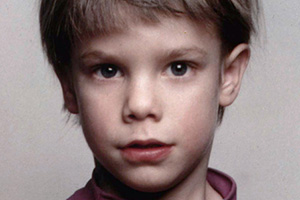Updated
On Nov. 13, 2012, the Manhattan District Attorney announced the indictment of Pedro Hernandez for the murder of Etan Patz, the 6-year-old boy who famously disappeared in 1979 on his way to school.
Hernandez had confessed to the murder during interrogations by New York detectives. Harvey Fishbein, the lawyer for Hernandez, said his client was mentally ill and his confession a fantasy he’d spun after hours of questioning by the detectives.
“The really sad part of this case,” Fishbein said, “is that it will take time, it will take money and it will not tell the city what happened to Etan Patz.”
On Friday, a judge in State Supreme Court in Manhattan made Fishbein look prescient. After years of preparation, months of trial, and 18 days of deliberation by a 12-person jury, Justice Maxwell Wiley declared a mistrial. The jury was hopelessly deadlocked.
As a result, the mystery surrounding one of the country’s notorious missing child cases survives.
Patz vanished in May 1979 on the first day his parents had permitted him to walk to the bus stop alone. The case prompted a huge police dragnet, and came to involve the FBI. Some federal investigators eventually believed Jose Ramos, a convicted pedophile and the onetime boyfriend of a Patz family babysitter, was the boy’s killer. But Ramos was never charged.
Hernandez, as an 18-year-old, had worked in a bodega along the boy’s route to school then gone on to a non-descript life as a sometime construction worker in New Jersey. He was interviewed by police after a family member registered a tip. Hernandez, some people later testified, had spoken vaguely over the years about once having harmed a child in New York. After hours of interrogation, Hernandez confessed. He said he choked the boy in the bodega’s basement. He offered no motive. And some of his claims contradicted the few accepted facts surrounding the boy’s disappearance.
But Hernandez was quickly arrested, and eventually indicted, despite prosecutors discovering no meaningful additional evidence against him.
Federal officials privately expressed skepticism about the case. Some prosecutors within the office of Manhattan District Attorney Cyrus Vance also worried that Vance was making a mistake in pursuing a conviction. Several experts interviewed by ProPublica faulted the police interrogation – hours of it went unrecorded – and said Hernandez appeared to fit the profile of someone who might falsely confess.
The lengthy trial involved competing expert witnesses who had different views of Hernandez’s mental health. Patz’s mother wound up on the stand. Former prosecutors testified about their enduring belief that Ramos, who remains in prison today, should be the person on trial.
The jury spent nearly three weeks re-hearing testimony, asking for exhibits and requesting clarifications on the law. They asked, at one point, if someone could be convicted based only on his or her confession. Twice before Friday, the jury had declared itself deadlocked. But Wiley had sent them back both times for more deliberation.
Joan Vollero, a spokeswoman for Vance, said no decision had yet been made on whether to re-try Hernandez. There is a court date set for June 10, at which a decision might be announced.
Vance, in a statement, said: “We believe there is clear and corroborated evidence of the defendant’s guilt beyond a reasonable doubt. The challenges in this case were exacerbated by the passage of time, but they should not, and did not, deter us.”
Update, Feb. 14, 2017: A Manhattan jury on Tuesday convicted Pedro Hernandez of murdering 6-year-old Etan Patz in 1979. The jury accepted the prosecution’s argument that Hernandez, then a teenage clerk in a bodega near Patz’s home, lured the boy into the store’s basement, strangled him and disposed of the body in a box on the city streets. The first trial of Hernandez resulted in a hung jury.












